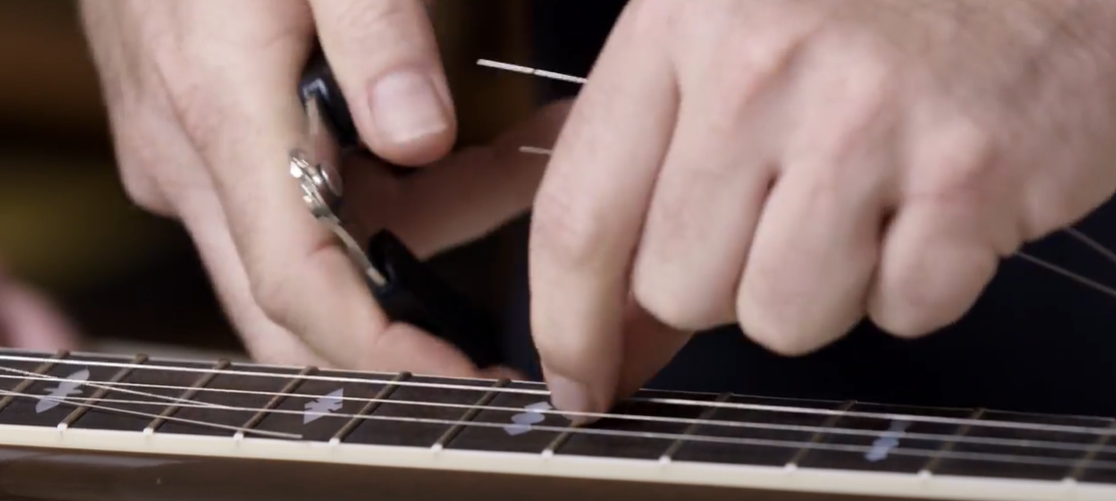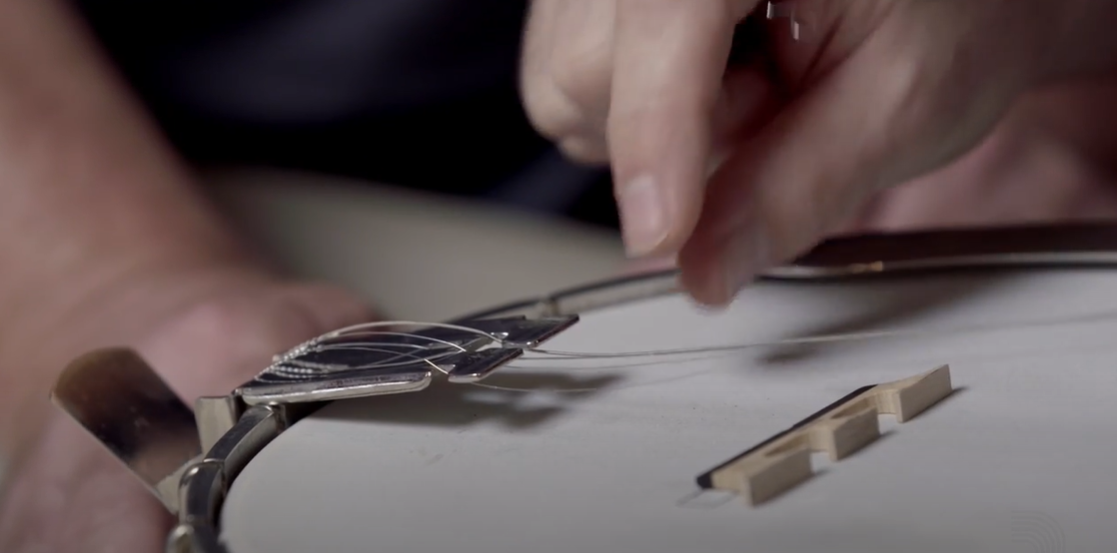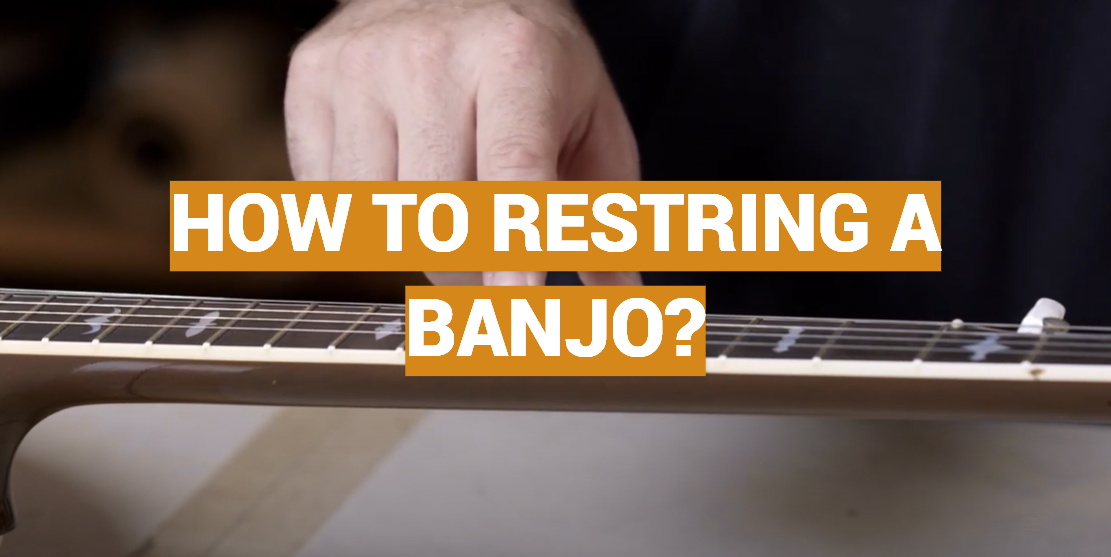Restringing a banjo is a fundamental skill for any banjo player. Over time, banjo strings may lose their tone, break, or simply wear out due to regular use and exposure to environmental factors. Changing your banjo strings not only keeps it playing at its finest, but also provides an opportunity to thoroughly clean and maintain other parts of the banjo, such as the bridge, tailpiece, and fretboard. By doing so, you ensure the longevity of your banjo and optimize its overall performance.
This comprehensive guide walks you through the step-by-step process of restringing your banjo effectively and efficiently. From selecting the right strings for your playing style to properly securing them onto the banjo, you’ll learn all the essential techniques and tips for best audio and playback performance. So, whether you’re a seasoned banjo player or a beginner looking to enhance your musical journey, this guide will equip you with the knowledge and skills needed to successfully restring your banjo and enjoy its rich, vibrant sound for years to come.
Step 1
Before embarking on the restringing process, it is crucial to ensure that you have the instruments and materials you may need within reach. Gathering everything you need can save you both time and energy in advance. Here’s a comprehensive list of items you should have on hand:
- New strings: Make sure you choose strings that are specifically designed for your type of banjo. Different banjo models require various gauges of string and supplies, so it’s essential to select the right ones for optimal performance and sound.
- Wire cutters: These are useful for cutting off any excess string length once installed. Make sure you get a good set of wire cutters that can cleanly and precisely cut through the strings without causing any damage.
- String winder (optional but helpful): While not essential, a string winder can greatly simplify the restringing process. It allows you to wind the strings quickly and evenly, saving you time and effort. Consider investing in one if you want to improve the effectiveness of the entire process.
- Tuner: Maintaining proper tuning is crucial for achieving the best sound quality from your banjo. Make sure you have a reliable tuner at hand to ensure accurate and precise tuning of each string.
- Cleaning cloth: Banjos, like any other musical instrument, require regular maintenance and cleaning. Having a soft cloth specifically for cleaning your banjo helps you maintain it in perfect shape by cleaning any dirt or debris that may affect its performance.
If you’re unsure about which strings to choose or need further guidance, don’t hesitate to reach out to a trusted music shop or consult with a seasoned banjo player. Their expertise and experience can provide valuable insights and recommendations. By preparing all your materials beforehand, you’ll set yourself up for a smooth and efficient restringing process, ensuring that your banjo stays in top-notch condition for optimal playability and enjoyment.[1],[2],[3]

Step 2
To begin the process of changing the strings on your banjo, it’s important to begin by slackening each string with the pegs. It will reduce the stretch and make it easier to remove the old strings. Having a string wrapper available can be a great tool to speed up this step.
Now that the old strings are removed, it’s a good opportunity to clean the banjo’s fretboard and areas that are typically difficult to reach when the strings are in place. Use a soft cloth to carefully clean the fretboard and remove any accumulated dirt or grime. This care is important for preserving the playability and tone of your instrument.
Finally, it’s important to dispose of the old strings responsibly. Consider recycling them if possible, as this is an eco-friendly option. By following these steps and giving attention to detail, you can ensure a smooth and effective process of changing your banjo strings while preserving the integrity of your instrument.[1],[2],[3]
Step 3
Now that your banjo is string-free and clean, time to put on new strings. Start with the lowest string (the one closest to your chin when you hold the banjo). You’ll notice one end of the string has a loop; carefully attach this loop to the tailpiece of the banjo, making sure it is secure.
Next, pick up the next end of the line and guide it through the corresponding tuning peg hole. As you pull it tight, ensure there’s enough slack for winding – about 2 to 3 inches should be sufficient. This will provide flexibility when tuning the string later on.
Now, it’s time to begin winding the string using the tuning pegs. Make sure the windings go downwards on the peg, allowing for proper alignment and tension. Take your time and wind the string slowly and evenly, avoiding any overlapping or twisting of the string.

Repeat this process with the remaining strings, placing them in the correct order according to their respective pitches. Remember to periodically stretch and tune the strings as you install them, as new strings have a tendency to go out of tune quickly. This will help in maintaining the desired pitch and sound quality.
It’s important to exercise patience during this process to ensure each string is properly aligned and tuned. Take the time to adjust the tension of each string as needed, making sure they are neither too loose nor too tight.
By following these steps, you will successfully restring your banjo and be ready to enjoy playing it once again. [1],[2],[3]
Step 4
With all the strings in place and preliminary tuning done, now comes the final tuning. Use your tuner for this step. Start from the lowest string and work your way up to the highest, adjusting the tuning pegs as needed to achieve the desired pitch for each string. Remember that new strings often take a little time to settle, and you might need to retune a few times over the next couple of days until they stabilize.
Regular string changes and maintenance are an integral part of being a banjo player. Dedicate time to learn and perfect these techniques, and your musical journey will be all the more rewarding. The attention and care you give to your instrument will not only keep it sounding its best but also contribute to your overall playing experience. So make sure to prioritize these steps and enjoy the beautiful sounds your banjo can produce.[1],[2],[3]

Step 5
Now that your banjo is freshly restrung and tuned, it’s important to consider how you store your instrument to maintain its quality. Always store your banjo in a sturdy, padded case when not in use to provide optimal protection from dust, moisture, and accidental damage. Select a case that offers a snug fit to prevent any unnecessary movement during transportation or storage.
In addition to proper casing, it is advisable to keep your banjo in a stable environment with a moderate temperature. Extremes of heat or cold can potentially warp the wood and affect the overall sound quality. Aim for a temperature range between 60 to 75 degrees Fahrenheit, and avoid exposing your banjo to direct sunlight or excessive humidity.
To further safeguard your banjo, consider placing a soft, dry cloth in your case. This will help absorb any excess moisture and prevent it from reaching the instrument. After each use, take a moment to wipe down the strings and body of the banjo with the cloth. This simple step will help remove any dirt or oils that may have accumulated during playing, preserving the longevity of your banjo’s sound and appearance.
Remember, regular maintenance and careful storage are just as vital as restringing when it comes to the overall care of your banjo. By following these guidelines, you can ensure that your banjo remains in prime condition for years to come, allowing you to enjoy its beautiful sound and continue to create music.[1],[2],[3]
Step 6
After taking the time to carefully restring and meticulously care for your banjo, the best way to truly savor the fruits of your labor is by indulging in the simple pleasure of playing. Whether you’re a beginner, eagerly exploring the enchanting world of banjo melodies, or a seasoned performer, skillfully mesmerizing audiences with your virtuosity, regular practice is the key that unlocks the door to improving your techniques and mastering this captivating instrument.
As you strum the strings with a renewed sense of excitement, take a moment to bask in the sublime harmony that resonates through the air. Notice how the new strings, perfectly aligned and tuned, produce a brilliant and vibrant tone that dances elegantly upon your ears. With each gentle pluck, you’ll delight in the responsiveness of the strings, effortlessly translating your musical intentions into a rich and expressive sound.
Remember, dear musician, that learning an instrument is a magnificent journey, an odyssey of self-expression and personal growth. And each time you undertake the task of restringing your beloved banjo, you not only honor your instrument by maintaining its pristine condition but also embark upon another chapter of your musical voyage. Embrace this opportunity with open arms, for it signifies progress, evolution, and the relentless pursuit of artistic excellence.

So, my fellow banjo enthusiast, as you revel in the rejuvenating aura of your freshly restrung instrument, let the music flow through your fingertips and your soul. Immerse yourself in the enchanting melodies and intricate rhythms that only a banjo can produce. Embrace the sheer joy of strumming, picking, and plucking, knowing that you are not only nurturing your banjo but also nurturing your own musical spirit. With each resounding note, may your heart soar and your spirit be uplifted. [1],[2],[3]
FAQ
Is restringing a banjo hard?
Restringing a banjo might seem daunting at first, especially for beginners who are just starting their musical journey. However, with the right materials, proper instructions, and a bit of patience, it can be a surprisingly straightforward task that anyone can learn and master.
The process of restringing a banjo involves a series of steps that not only ensure the optimal sound quality of your instrument but also contribute to its longevity. First, you’ll need to carefully remove the old strings, taking care not to damage any other parts of the banjo. This step requires a steady hand and attention to detail.
Once the old strings are removed, it’s important to take a moment to clean certain parts of the banjo, such as the fretboard and the bridge. This ensures that there are no residues or debris that could affect the performance of the new strings. A clean banjo is not only visually appealing but also plays a significant role in producing clear and crisp tones.
Next comes the exciting part: attaching the new strings. This is where you can experiment with different types of strings to find the perfect sound that suits your playing style. Whether you prefer a bright and twangy tone or a warmer and mellower sound, the choice of strings can make a significant difference in your overall playing experience.
Once the new strings are securely attached, it’s time to tune your banjo. This step is crucial to ensure that each string is at the correct pitch, allowing you to play in tune with other musicians or backing tracks. Tuning can be done using a tuner or by ear, depending on your preference and level of experience.

Lastly, don’t forget about the importance of regular maintenance and proper storage. As you continue to play and practice on your banjo, it’s essential to keep the strings clean and periodically check for any signs of wear or damage. Proper storage, such as using a case or a stand, can also help protect your instrument from dust, humidity, and other environmental factors that can affect its condition.
Remember, restringing a banjo may initially pose a challenge, but with each restringing session, you’ll find the process becoming second nature. The satisfaction of playing on a freshly strung banjo with strings that are in their prime is well worth the effort. So, embrace the opportunity to learn this necessary skill and enjoy the process of maintaining your instrument’s sound quality and longevity. Happy strumming!
How do you fit a banjo string?
To properly fit a new string on a banjo, there are a few precise steps that should be followed. Start by carefully examining the new string and locating the loop end. Attach this loop end securely to the tailpiece, which is located at the base of the banjo. Take your time to ensure a secure attachment, as this will contribute to the overall stability of the string.
Next, gently guide the other end of the string up through the bridge, which is an important component of the banjo’s structure. Pay close attention to the positioning of the string as you thread it through the bridge, as this will affect the sound and playability of the instrument. Once the string is threaded through the bridge, direct it towards the corresponding tuning peg at the head of the banjo.
As you reach the tuning peg, carefully insert the end of the string through the hole in the peg. It is important to leave about 2 to 3 inches of slack in the string, as this will allow for proper winding and tension adjustment. Taking the time to ensure the correct amount of slack will contribute to the longevity and stability of the string.
Now comes the winding process. Begin winding the string around the tuning peg in a clockwise direction. Pay close attention to the positioning of the windings, ensuring that they stack downwards on the peg. This will contribute to the overall neatness and stability of the string. Take your time and wind the string carefully, making sure that each winding is tight and secure.
It is important to find the right balance when winding the string. While it should be taut enough to produce a clear and resonant sound, it is crucial to avoid over-tightening, as this can cause the string to snap. Take your time and make small adjustments as needed to achieve the desired tension.
Once the string is securely wound, take a moment to tune it to the correct pitch. Use a tuner or your own ear to ensure that the string is in tune. This step is important to achieve the best sound quality and to ensure that the banjo is ready for playing.
Repeat this entire process for each string, always starting from the lowest (the one closest to you when holding the banjo) and working your way up to the highest. By following these detailed steps, you can ensure that each string is properly fitted, contributing to the overall playability and enjoyment of your banjo.
How do you tune a 5 string banjo?
Tuning a 5-string banjo is a critical step in preparing to play. To achieve the best sound quality, it is recommended to use a chromatic tuner for accurate results. Here’s a step-by-step guide on how to tune your banjo:
- Begin with the fifth string, which is the string closest to the floor when holding the banjo. This string is typically tuned to G4. Pluck the string and carefully adjust the tuning peg until the tuner indicates that you have reached G4.
- Move on to the fourth string, which is usually tuned to D3. Pluck the string and make gradual adjustments to the tuning peg until you achieve the desired pitch of D3.
- The third string should be tuned to G3. Repeat the process of plucking the string and adjusting the tuning peg until you reach the correct pitch of G3.
- Proceed to the second string, which is tuned to B3. Utilize the tuner to ensure that you are precisely hitting the intended pitch.
- Finally, the first string, which is the string closest to the ceiling when holding the banjo, is also tuned to D4. Follow the same process of plucking the string and making fine adjustments to the tuning peg until you reach the desired pitch of D4.
Remember, when strings are new, they may require re-tuning a few times as they stretch and settle. Always check the tuning before you start playing to ensure the best possible sound.
By following these detailed steps, you will be able to tune your 5-string banjo accurately and enjoy optimal sound quality during your playtime.

How often should you change banjo strings?
The frequency of changing banjo strings can depend on several factors, including how often you play, your playing style, and the environmental conditions where the banjo is stored. However, as a general rule of thumb, if you play your banjo regularly (for instance, a few hours every day), you should consider changing your strings every 6 to 8 weeks. For those who play less frequently, a change every 3 to 4 months might be sufficient. Remember, worn or old strings can impact the sound and playability of your banjo. If you notice the sound is starting to dull, the strings are becoming difficult to tune, or you can see visible signs of wear like rust or discoloration, it’s probably time for a string change. Regular string changes will keep your banjo sounding its best and ensure you enjoy playing your instrument.
Do banjos get better with age?
Just like fine wines, some musical instruments are said to improve with age, and this concept applies to banjos as well. As time passes, the wooden parts of a banjo, such as the rim and neck, undergo a natural process called aging. This aging process often results in a richer, warmer tone and increased resonance, enhancing the overall sound quality of the instrument. However, it’s important to note that this improvement doesn’t happen spontaneously. The condition of a banjo as it ages is significantly influenced by how well it’s been maintained and cared for over the years. Regular cleaning, proper storage, and timely restringing and tuning can greatly contribute to a banjo’s longevity and sound improvement over time. Consequently, an older, well-maintained banjo can deliver a superior musical experience compared to a new one.
How many hours a day should I practice banjo?
The amount of practice required to improve your banjo playing skills can vary greatly from person to person and depends on your current skill level, your goals, and the amount of free time you have. As a beginner, aiming for 20-30 minutes of focused, intentional practice each day can yield significant improvements. As you become more proficient, you might want to increase your practice time to one to two hours per day, breaking it up into smaller sessions to avoid fatigue. Remember that quality trumps quantity when it comes to practice. It’s better to have shorter, focused sessions where you work on specific techniques or pieces, rather than mindlessly strumming for hours. Practicing regularly, even if it’s for shorter periods, will help you develop muscle memory and improve your playing over time. Lastly, make sure to balance practice with rest to avoid straining your fingers or damaging your hearing.
Useful Video: D’Addario Core: How to Change Strings on a Banjo
Conclusion
Learning to play and maintain a banjo is a rewarding journey. Whether changing strings, tuning, or adjusting your practice schedule, each step enhances your bond with the instrument and deepens your understanding of its intricate workings. Regular maintenance, including timely string changes and tuning, ensures optimal sound quality and longevity of the instrument. Moreover, practice is a crucial element for improving your playing skills. Remember, it’s not about the number of hours you put in, but rather the quality of the focused time you spend. Like any valuable skill, mastering the banjo takes time, patience, and diligent practice. With perseverance and a love for the instrument, you’re sure to make great strides in your banjo playing journey.
References:
- https://mixingaband.com/how-to-restring-a-5-string-banjo/
- https://ourpastimes.com/how-to-string-a-5-string-banjo-12209242.html
- https://cleanmyinstrument.com/clean-banjo-guide/










Leave a Reply